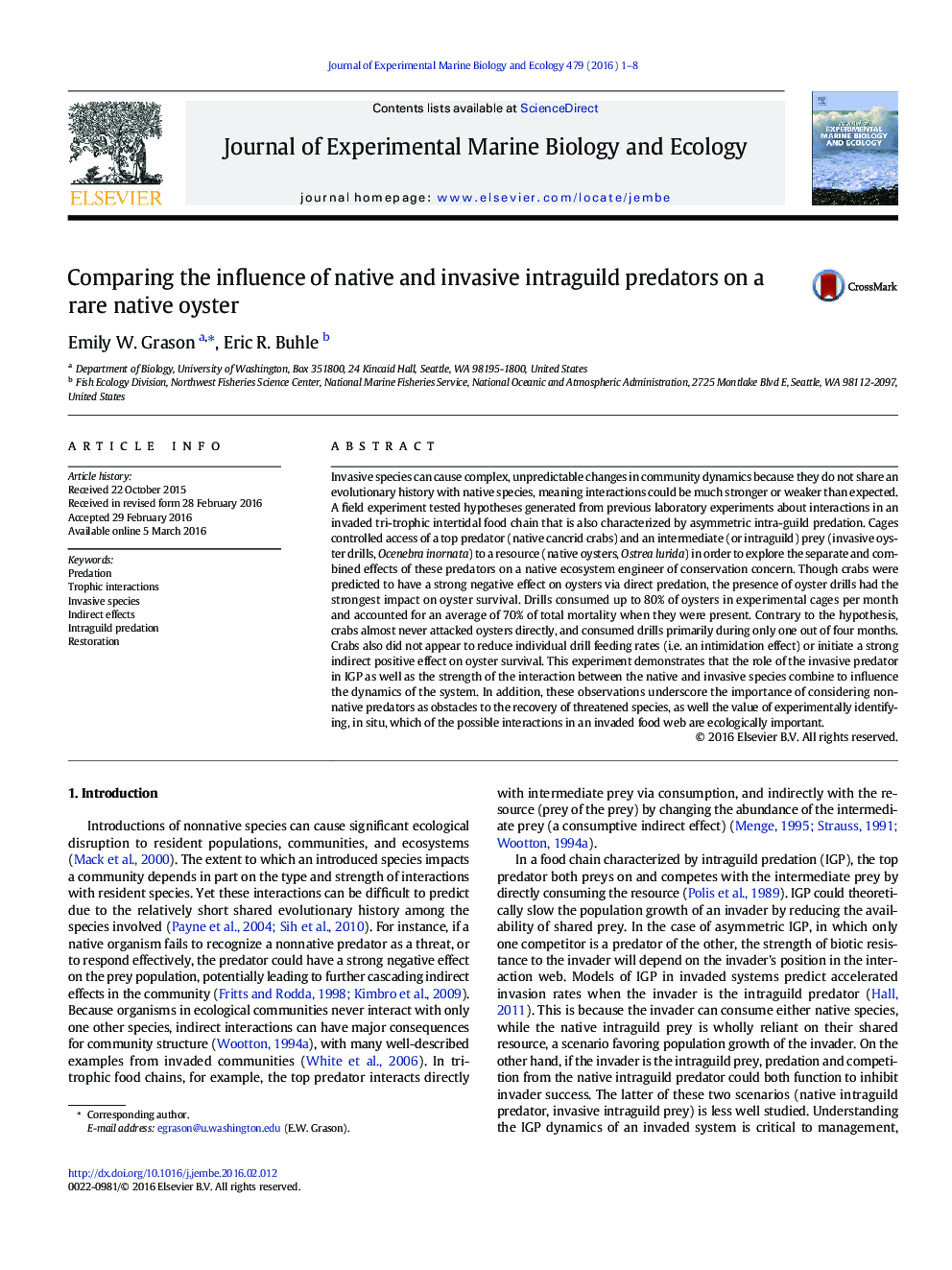| کد مقاله | کد نشریه | سال انتشار | مقاله انگلیسی | نسخه تمام متن |
|---|---|---|---|---|
| 4395258 | 1618396 | 2016 | 8 صفحه PDF | دانلود رایگان |
• The impact of native and non-native predators on native oysters is assessed.
• Invasive whelks are main cause of oyster mortality at an oyster restoration site.
• Invasive whelk feeding rates vary seasonally, peaking mid-summer.
• Native crabs are not important predators of oysters, but do consume drills.
• Only a few of the interactions observed in lab experiments are important in nature.
Invasive species can cause complex, unpredictable changes in community dynamics because they do not share an evolutionary history with native species, meaning interactions could be much stronger or weaker than expected. A field experiment tested hypotheses generated from previous laboratory experiments about interactions in an invaded tri-trophic intertidal food chain that is also characterized by asymmetric intra-guild predation. Cages controlled access of a top predator (native cancrid crabs) and an intermediate (or intraguild) prey (invasive oyster drills, Ocenebra inornata) to a resource (native oysters, Ostrea lurida) in order to explore the separate and combined effects of these predators on a native ecosystem engineer of conservation concern. Though crabs were predicted to have a strong negative effect on oysters via direct predation, the presence of oyster drills had the strongest impact on oyster survival. Drills consumed up to 80% of oysters in experimental cages per month and accounted for an average of 70% of total mortality when they were present. Contrary to the hypothesis, crabs almost never attacked oysters directly, and consumed drills primarily during only one out of four months. Crabs also did not appear to reduce individual drill feeding rates (i.e. an intimidation effect) or initiate a strong indirect positive effect on oyster survival. This experiment demonstrates that the role of the invasive predator in IGP as well as the strength of the interaction between the native and invasive species combine to influence the dynamics of the system. In addition, these observations underscore the importance of considering non-native predators as obstacles to the recovery of threatened species, as well the value of experimentally identifying, in situ, which of the possible interactions in an invaded food web are ecologically important.
Figure optionsDownload high-quality image (201 K)Download as PowerPoint slide
Journal: Journal of Experimental Marine Biology and Ecology - Volume 479, June 2016, Pages 1–8
